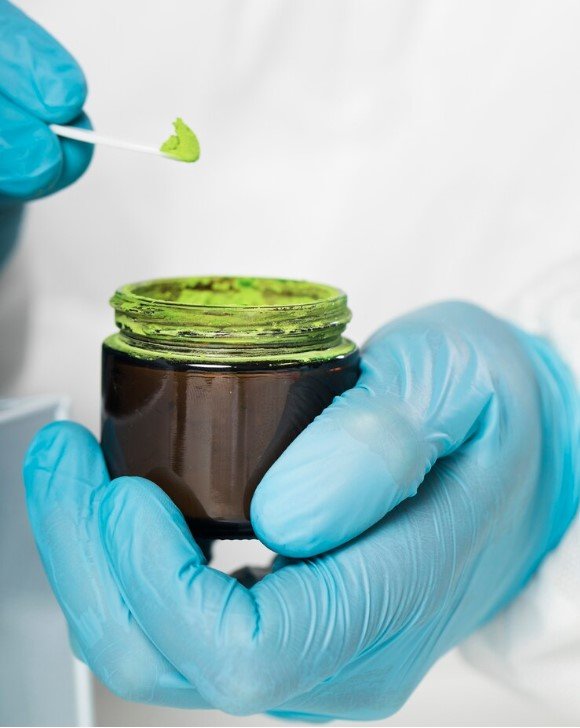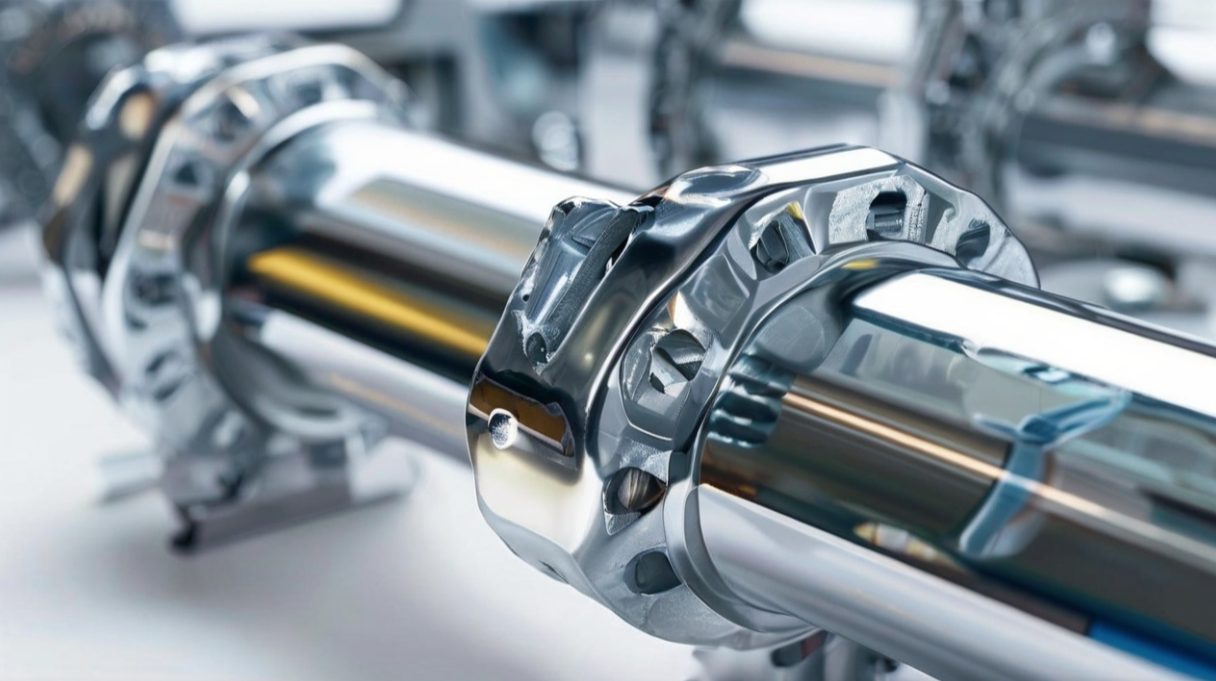High Strength, Low Stress Nickel Sulfamate Plating for Aerospace and Automotive Applications
Nickel sulfamate plating is a well-regarded electroplating method known for its production of excellent nickel coatings that are ductile and low stress. Industries like aerospace, automotive, and electronics rely on this process for superior surface finishes. This article explores the details of nickel sulfamate plating, including its benefits, considerations, and applications.
Method and Properties
Nickel sulfamate plating is an electroplating method that deposits a layer of nickel onto a metal substrate. The process involves an electrolyte solution containing nickel sulfamate (Ni(SO₃NH₂)₂). The current facilitates the reduction of nickel ions, which then adhere to the cathode, forming a strong and uniform nickel coating. Due to its exceptional properties, nickel sulfamate plating is often selected for applications that require high-quality finishes, mechanical durability, and corrosion resistance.
Advantages of Nickel Sulfamate Plating
Low Internal Stress
Nickel sulfamate baths are specifically designed to produce deposits with minimal internal stress. This is essential in applications where parts undergo mechanical loads or thermal cycling, as it prevents issues like cracking or peeling.
High Ductility
Nickel sulfamate plating delivers a highly ductile deposit, meaning the nickel coating can withstand bending and elongation without breaking. This makes it ideal for flexible electronics, springs, and formable components.
Thick, High-Quality Coatings
One of the standout features of this plating process is its ability to create thick nickel deposits without sacrificing quality. This makes nickel sulfamate plating particularly useful in applications like dimensional restoration and wear-resistant coatings.
Superior Corrosion Resistance
Nickel sulfamate-plated surfaces are highly resistant to corrosion, making them suitable for industries exposed to harsh environments such as chemical processing, marine applications, and aerospace.
Smooth Surface Finish
The resulting surface from nickel sulfamate plating is generally smooth and uniform, reducing the need for extensive post-plating polishing or buffing.
Operating Parameters
Achieving optimal results from nickel sulfamate plating requires careful management of several operational factors. Here’s a closer look at some key parameters:
Bath Composition
The electrolyte solution primarily contains nickel sulfamate, the source of nickel ions. Other additives, such as boric acid, are introduced to stabilize the pH and improve the quality of the nickel deposit. Maintaining the proper bath composition is crucial to avoiding contamination and ensuring a high-quality finish.
pH Control
The pH level of the bath (typically between 3.5 and 4.5) plays a critical role in achieving consistent deposits. A lower pH can induce higher stress in the nickel coating, while a higher pH may lead to the formation of hydroxide, which negatively affects adhesion and can result in a rough surface.
Temperature
Nickel sulfamate baths operate optimally between 45°C and 60°C. Higher temperatures increase the deposition rate but may also cause higher internal stress. Conversely, lower temperatures slow down the plating process and may compromise the quality of the deposit.
Current Density
Proper control of current density is vital for controlling the thickness and overall quality of the nickel coating. Too high a current density can cause rough, brittle deposits, while too low a current density may lead to slow plating rates and poor adhesion.
Anode Material
The choice of anode material is crucial. Purity is important to prevent contamination of the electrolyte solution. The anode-to-cathode ratio must also be managed carefully to ensure even and consistent plating.
Agitation and Filtration
Adequate agitation of the electrolyte ensures a uniform distribution of ions, preventing localized depletion near the cathode. Additionally, continuous filtration helps remove impurities and particulates that could cause defects in the nickel deposit.
Applications
Nickel sulfamate plating is utilized in numerous industries, thanks to its versatile mechanical and chemical properties. Here are some of the most common applications:
Mold Tooling
In industries such as plastics and rubber manufacturing, nickel sulfamate plating is applied to mold surfaces to improve wear resistance and extend the lifespan of the tooling.
Electronics Manufacturing
Nickel sulfamate coatings are often used in electroforming processes for microelectronics and semiconductors. The precision and fine details provided by this plating method are crucial for the performance of electronic components.
Aerospace and Defense
The aerospace industry values nickel sulfamate plating for its low-stress properties and corrosion resistance, especially in environments exposed to extreme temperatures and harsh atmospheric conditions.
Restoration of Worn Parts
Industries such as automotive and heavy machinery often employ nickel sulfamate plating to restore worn or damaged parts. The thick coatings it produces help rebuild and restore the dimensions of components.
Process Optimization
As with any electroplating method, maintaining strict control over the process variables is key to achieving high-quality results. Below are some best practices for optimizing the nickel sulfamate plating process:
Bath Ingredient Control
Nickel sulfamate is the primary source of nickel in the bath, and its concentration typically ranges from 75-135 g/L. Boric acid, chloride, and optional stress reducers or brighteners can also be included to improve deposit quality.
Monitoring pH and Temperature
The pH should be carefully controlled within the 3.8-4.5 range. Higher pH values can lead to hard, brittle deposits, while lower pH levels might increase stress. Temperature is another critical factor, with the optimal range being 45°C to 60°C.
Current Density Adjustments
Adjusting the current density (0.5-21 A/dm²) affects the speed and quality of the nickel deposit. Lower current densities reduce the risk of brittleness and ensure better adhesion.
Challenges
Despite its many advantages, issues can arise during nickel sulfamate plating that may affect the quality of the deposits. Here are some common problems and their solutions:
Pitting
High pH, contamination (iron or organic materials), low boric acid.
Adjust pH, increase boric acid levels, perform carbon treatment to remove organics.
Burning
Low boric acid, high current density, low metal content.
Add boric acid, reduce current density, and increase metal content.
Dark Deposits
Metallic contamination, low pH.
Perform a low-current dummy plating to remove contaminants and adjust the pH. More importantly, identify the source of contamination and minimize.
Poor Adhesion
Inadequate surface cleaning, chromium contamination.
Improve cleaning procedures and remove contaminants.
An Idea in Brief
Many automotive, aerospace and electronics applications heavily rely on nickel sulfamate plating for industries with high-performance coating needs. This plating method remains crucial due to its superior ductility, low stress, and excellent corrosion resistance.
Achieving success in nickel sulfamate plating relies on precise operational parameter control, continuous monitoring, and a methodical troubleshooting approach.
Professionals who prioritize these elements in electroplating can achieve consistent, high-quality results that improve product performance and durability.
With ongoing advancements in electroplating, nickel sulfamate systems are expected to evolve and become more efficient. To fully capitalize on the versatility of this electroplating method, it’s crucial to stay informed about best practices and innovations.
Read more…

Posted By:Venkat Raja
Sep 19, 2024
Tags:







